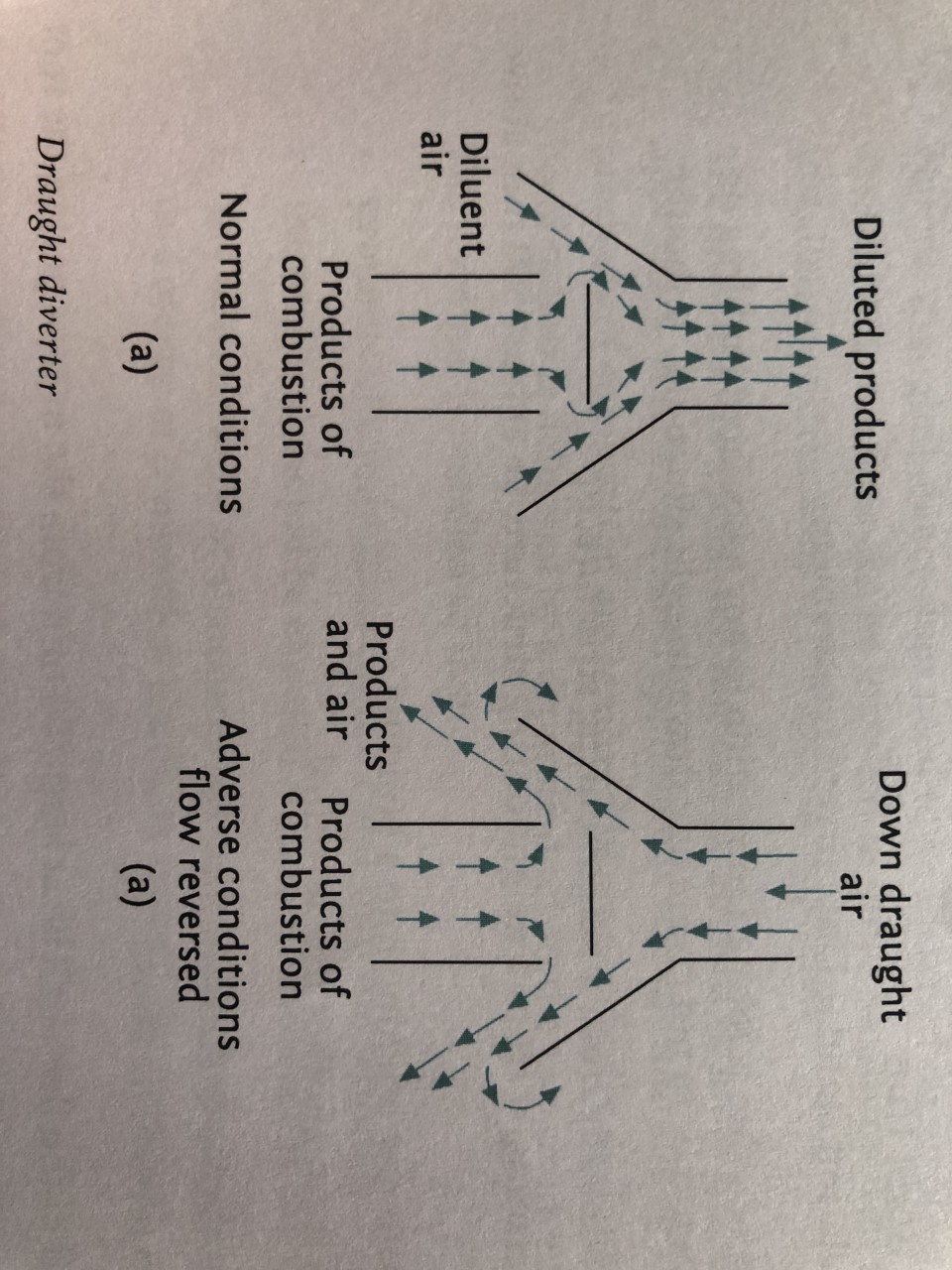Gas Flue Installations Lesson
In this lesson we will look into the different types of gas appliance flue systems.
Open or Natural Draught Flue
|
This consists of four principle components:
|
||
|
Primary Flue: This creates the initial flue draught (also know as flue pull) required to remove all the products of combustion from the appliance. This comes as part of the appliance. |
||
|
Draught Diverter: This does three things:
The flue pull of the secondary flue depends on the height of the flue and a number of other factors. This pull, if taken to where the burner or flame (combustion chamber) is situated, would have a direct effect on the appliances performance and efficiency. In certain weather conditions, wind can blow down a flue, thus pushing the flue gases back down the flue (down draught). If allowed to enter the combustion chamber, they would interfere with correct combustion. For this reason the down draught is diverted away from the primary flue and into the room containing the appliance. |
 |
|
| Draught Diverter | ||
|
Secondary Flue: The purpose of the secondary flue is to take the products of combustion and the diluted air to the terminal. |
||
|
Terminal or Cowl: The terminal is fitted onto the end of the secondary flue, outside the building. Its main roles are:
|
 |
|
| Flue Cowl / Terminal |